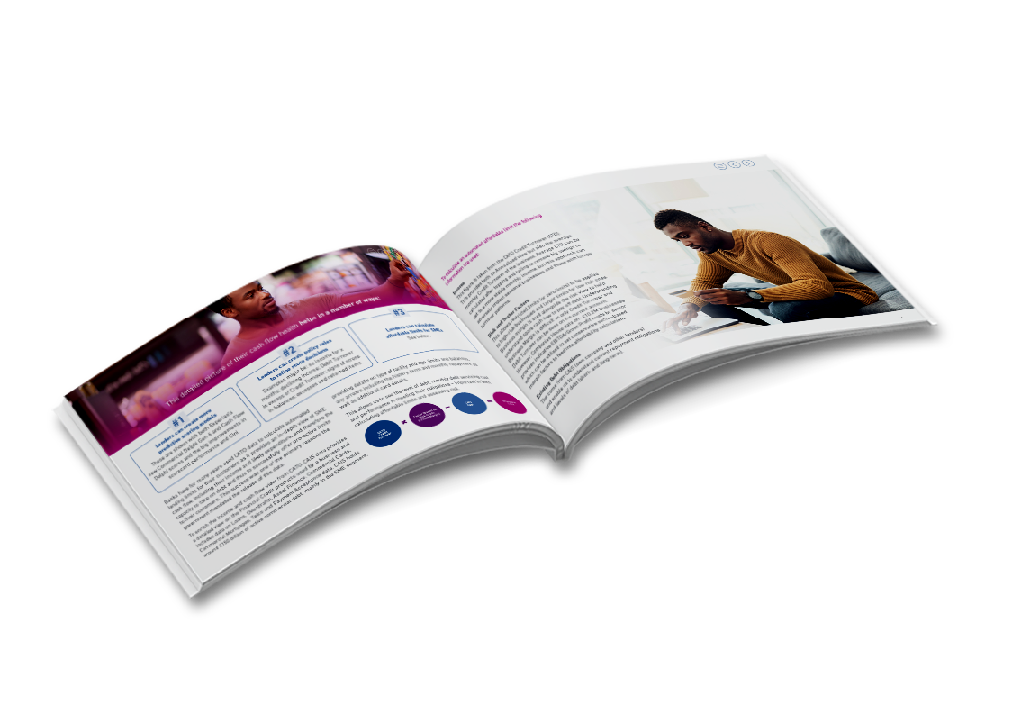Being able to quickly and effectively assess the affordability of loans is a critical issue within the commercial lending market.
It helps meet the increasing demands from regulators – especially with respect to responsible lending – and it also improves margins.
At the heart of this is the need to automate the lending process as much as possible. The needs of SMEs (small and medium-sized enterprises) must also be met quickly and cost-effectively, with low referrals and underwriting, whilst at the same time keeping bad debt at an acceptable level.
What’s covered in this report?
To be able to understand if a business can service its debts and to automate the assessment of affordability, then using the correct data is critical. We take a look at assessing commercial affordability using the some key data points.
Download the report nowThree methodologies for assessing financial data
To be able to understand if a business can service its debts and to automate the assessment of affordability then using the correct data is critical.
Assessing affordability using Categorised Bank Account Data
Open Banking has made available extremely granular, transactional data on income and expenditure items for both consumers and businesses.
Assessing affordability using Commercial CATO and CAIS
The Small Business, Enterprise and Employment Act 2015 brought in new data sharing principles (CCDS) designed to help facilitate greater choice in the commercial lending market.
Assessing affordability using Management Accounts
Management Accounts provide a valuable and detailed insight into a business. This report lists a brief summary of the key critical documents which are available.

The commercial lending market is evolving at pace.
There is a push towards automation in order to reduce operational costs whilst lenders need to reduce bad debt through ensuring better serviceability of repayments.
The legislative burden continues to become more onerous, and lenders have to contend with the increasing variety of revolving finance products, such as Buy Now, Pay Later (BNPL), that are coming to the market.
There are three main alternative approaches for assessing loan affordability for simple- and medium-complex businesses under these circumstances. CAIS and CATO data, categorised bank account data and management accounts data.
A sneak peek into...
Commercial Affordability for Financial Providers
Increased affordability complexity due to uncertain economic conditions
Many of the cost of living factors that are currently impacting consumers are having either a direct, or knock-on, impact on the financial health, or otherwise, of businesses applying for lending products. During the COVID-19 pandemic, the government quickly put measures in place to protect UK businesses from negative economic impacts.
However, the strategy for reducing the impacts of the cost of living crisis on businesses is more uncertain. This is leading to increased demand for commercial credit, but also to increased financial stress and, potentially, reduced affordability in the near term at least.
Several of the key factors currently impacting businesses, and which therefore need to be considered by lenders in all affordability analyses, are:
![]()
Inflation in raw materials, fuel costs and energy costs
These are increasing the cost of doing business, stifling growth ambitions and increasing the need for cheap credit. The impacts are especially pronounced in sectors such as farming,logistics and high-energy industries such as manufacturing.
![]()
Reduced consumer confidence and levels of spending
This is negatively impacting business revenues, especially in ‘luxury’ sectors, hospitality, and even in clothing and food retail.
![]()
Brexit challenges to free flow of goods
These are increasing workloads and costs and impeding normal business activities with negative impacts on revenues and margins.
![]()
Increased staffing costs
These are related to both a lack of skills and available employees, as well as higher wage demands related to the consumer cost of living crisis.
![]()
Slowing economies around the world
These have a negative impact upon UK businessesthat export goods or services overseas.
![]()
The rising cost of credit
This is due to interest rate rises.
Understanding affordability: Net Free Cash Flow
There are four key elements that are used to determine affordability. These include business income (turnover), costs, depreciation, and dividends (drawings).
Did you enjoy the read?
Download the full whitepaper
Learn how Experian can help you assess affordability for your commercial clients.









